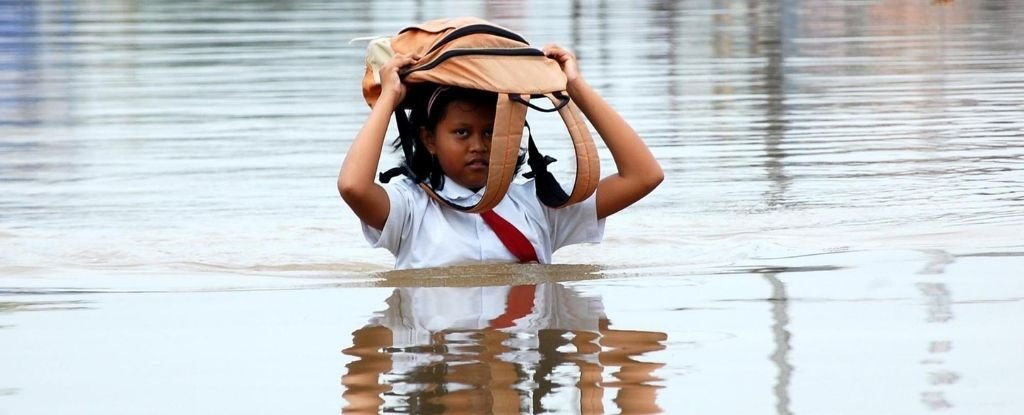Products You May Like
Younger generations are going to grow up in a very different world to that of their parents – and through no fault of their own.
Compared to babies born in 1960, a series of new models suggests children born after 2010 will experience four times as many extreme climate events in their lifetimes on average, and that’s only if we keep global warming to 1.5 degrees Celsius, a threshold that is approaching all too fast.
A recent report from the United Nations already puts the world on track to warm 2.7 degrees by the end of the century, and according to the new models, that extra degree or so will be exponentially disastrous.
If the world warms by 3 degrees Celsius come 2100, the authors predict the average 6-year-old will experience twice as many wildfires and cyclones, three times as many river floods, four times as many crop failures, five times as many droughts, and 36 times as many heatwaves as early Gen X-ers.
“Our results highlight a severe threat to the safety of young generations and call for drastic emission reductions to safeguard their future,” the authors write.
As the climate crisis continues, growing evidence suggests extreme weather events like hurricanes, cyclones and wildfires will become more frequent and possibly more severe as well.
The new study is the first to predict how younger generations will be personally impacted by these looming disasters over their lifetimes.
To calculate this, researchers created models that incorporate three streams of information: global population data, such as populations growth and average lifespans; projections for six extreme weather events, including wildfires, cyclones, river floods, crop failures, droughts and heatwaves; and future climate scenarios put together by the Intergovernmental Panel on Climate Change (IPCC).
The results are far from perfect, but they are an important step in identifying differences in “intergenerational inequalities”.
For example, a child born in 2020 gets to look forward to significantly more heatwaves throughout their lifetime. But the amount will depend on how much we limit emissions: a person born in 1960 will experience around four heat waves in their lifetime, while today’s children will experience around 18 if warming is limited to 1.5 degrees, or 22 if warming rises to 2 degrees.
With a ‘business as usual’ scenario – which is going to lead to a rise of between 2.6 and 3.1 degrees – those born in 2020 will experience around 30 heatwaves in their lifetime, seven times more than those born in 1960.
For kids living in parts of the global south, the numbers are particularly worrisome. Compared to people who lived before the industrial revolution, those born in 2020 in sub-Saharan Africa are predicted to experience, on average, nearly 6 times more extreme climate events in their lifetimes.
In all likelihood, the authors say that’s an underestimation.
After all, the data punched into their models do not include slow-onset disasters like coastal flooding from rising seas and do consider the possibility that climate events may get more severe as well as more frequent. What’s more, multiple exposures to climate disasters in one year were only counted as one.
The good news is that if warming can be limited to 1.5 degrees, researchers think the burden of extreme weather events on children can be “substantially reduced“.
In the Middle East and Northern Africa, for instance, lifetime exposure to extreme weather events could fall by a whopping 40 percent among younger generations, but only if we meet the strictest aspirations of the Paris climate agreement.
If we want that to be our reality, we need to change direction and fast.
An accompanying report to the models, released by the organization Save the Children, urges wealthy nations around the world to limit global warming to 1.5 degrees and invest in ways that will help children adapt to the climate crisis and the new extremes of their future. Otherwise, the CEO Inger Ashing says, we will be handing our children “a deadly future”.
“The climate crisis is a child rights crisis at its core,” continues Ashing.
“We need to scrap our dependency on fossil fuels, set up financial safety nets and support the hardest hit people. We can turn this around – but we need to listen to children and jump into action. If warming is limited to 1.5 degrees, there is far more hope of a bright future for children who haven’t even been born yet.”
The study was published in Science.
